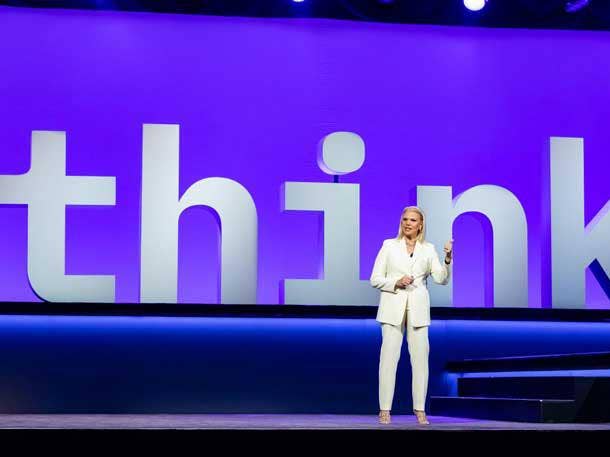IBM CEO: New Watson Platform Will Be 'Most Open, Scalable AI For Business In The World'

IBM CEO Ginni Rometty interviewed leaders of some of the world's most innovative companies Tuesday about how they transformed their businesses with cloud and artificial intelligence.
In her IBM Think conference keynote in San Francisco, Rometty explored how companies like Kaiser Permanente and GEICO—among Big Blue's more than 20,000 AI engagements on the Watson platform—implemented digital transformation initiatives and were gearing up to scale AI to achieve unprecedented efficiencies and levels of customer engagement.
Earlier in the day, Rometty noted, IBM introduced Watson Anywhere—a version of IBM's cognitive platform that can run on-premises, in IBM's cloud, or any other cloud, be it private or public.
"This will be the most open, scalable AI for business in the world," Rometty said of the offering.
[Related: IBM Channel Chief Assesses Partner Program Overhaul At PartnerWorld 2019]
IBM's CEO also touted IBM Business Automation with Watson. That new solution can be thought of as a business automation workflow with intelligence baked in; or AI with the guardrails of business automation.
Rometty told IBM partners and customers that AI is developing in three fundamental ways: core AI, trusted AI and scalable AI.
Core AI is focused on how to get AI to learn with less data. "This is what's needed to scale in business," Rometty said.
That technology aiming to unify learning and reasoning saw a demonstration the previous night when IBM's Project Debater lost a hotly contested debate to a human.
On the trusted AI front, the central issues are relevance, fairness, robustness, life cycle and lineage in applications, she said.
And scalable AI is using the technology to propagate itself. IBM is aiming for 1,000 times greater efficiency by allowing AI to choose the best AI algorithms for specific data sets, she explained.
All those developments are coming to fruition as the industry enters Chapter 2 of "this digital reinvention," Rometty said.
Chapter 1, she said, saw 20 percent of workloads migrate to cloud—mostly customer-facing apps, maybe some that wanted to take advantage of inexpensive compute.
But the next chapter is about scaling cloud and embedding it everywhere in the business, Rometty told THINK attendees.
Cloud means hybrid cloud and multi-cloud, since no one environment suits all use cases, and most large companies have existing infrastructure, including, on average, between five and 15 cloud providers.
The second chapter of unified cloud environments is hosting mission-critical apps, underpinned by trust and responsible stewardship, Rometty said.
"That means you have to modernize apps to get there," she added.
Rometty spent much of her keynote interviewing the CEOs of GEICO, Hyundai's credit card division, Kaiser Permanente and AT&T about their digital transformation journeys and deployment of AI for innovative use cases.
She also welcomed to the stage James Whitehurst, CEO of Red Hat.
IBM sees an open future of containers, Kubernetes and microservices. "That's why we're in the process of acquiring Red Hat," Rometty said.
Whitehurst explained to IBM's customers that Red Hat takes ope- source projects and makes then consumable for the enterprise.
The company's technology makes multi-cloud a reality, helps expose AI to the enterprise, and is powering edge deployments like self-managing, self-healing infrastructure in vehicles.
"The combination of what we can do is exciting," Whitehurst said of the unification of the two companies.